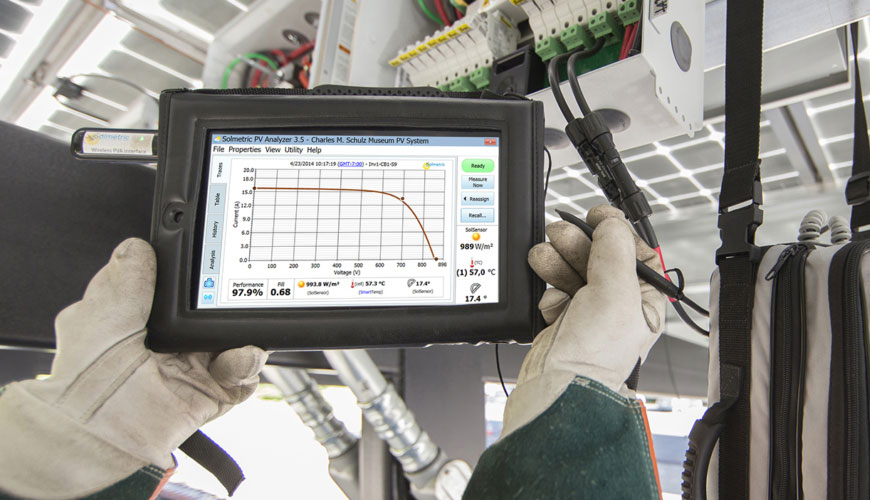

Photovoltaic (PV) cells convert the sun's bright light into electricity. Today, as the demand for clean energy sources increases and the fact that the sun is a costless energy source is realized, the approach to adopting renewable energy and solar energy conversion has become more critical and the development of efficient solar cells has accelerated.

In this context, the solar IV curve (current-voltage curve) is a critical tool. It is a fundamental factor in the development of solar and photovoltaic (PV) cells, as it allows to better understand the solar energy conversion capability and efficiency of a solar cell device.
The Solar IV curve (current-voltage curve) is a graphical representation of how a particular solar cell works. It is based on the relationship between current and voltage in the existing radiation and temperature conditions, that is, in the environment where the solar cell is located. That's why, thanks to the solar IV curve, engineers try to configure the solar cell to operate at its optimum potential.
Knowing the electrical IV characteristics of a solar cell or panel is very important in determining what output a device has and what its solar efficiency is.
Solar cells produce direct current electricity (DC), and the relationship between current and voltage generates power. Therefore, solar IV curves are created to represent current versus voltage for a photovoltaic device.
The intensity of solar radiation and the intensity of its impact on the cell control the current (I), while the temperature rise experienced by the solar cell reduces the voltage (V).
PV cells are generally made of semiconductor silicon. This semiconductor silicon is processed into an extremely pure crystalline material that absorbs photons emitted from sunlight. These photons hit the silicon atoms in the solar panel and release these electrons, causing an electric current to flow when the PV cell or solar panel is connected to an external load such as a battery.
The relationship between voltage and current shown in an IV curve ensures that the critical configuration takes place to ensure that the solar cell is positioned correctly and therefore ultimately produces sufficient electrical power.
In this regard, the solar IV curve can be generated at any time during installation, commissioning, performance or troubleshooting of a PV cell. More and more PV cell installations are seen in commercial, industrial and residential environments. Therefore, the solar IV curve is important in determining the optimum conditions for a particular cell and whether this particular location is viable or practical in terms of generating sufficient electricity.
Advanced laboratories today have a wide variety of solar PV testing equipment that extracts the solar IV curve. Solar IV curve monitors are types of advanced test equipment that scan an electrical load connected to a solar PV module or array and measure both current and voltage at multiple points during the scan. The current and voltage value pairs are then used to directly plot an IV curve. To overcome the influence of external factors such as temperature and irradiation, IV curve trackers measure and record irradiance and temperature in general, allowing for an accurate comparison of measurements with the PV module specification. Some IV monitors also include databases of PV module data to allow immediate comparison of field-measured values with manufacturer-declared values as a way of verifying the fit-for-purpose and performance of installed systems.
Briefly, the IV curve is a graphical representation of the power as a function of the measured current and voltage. IV curve monitoring is an integral part of evaluating PV module performance and diagnosing power output degradation.
Among the numerous tests, measurements, analysis and evaluation studies given to businesses by our organization, there are also solar IV curve monitoring tests.
To get an appointment, to get more detailed information or to request an evaluation, you can ask us to fill in our form and reach you.